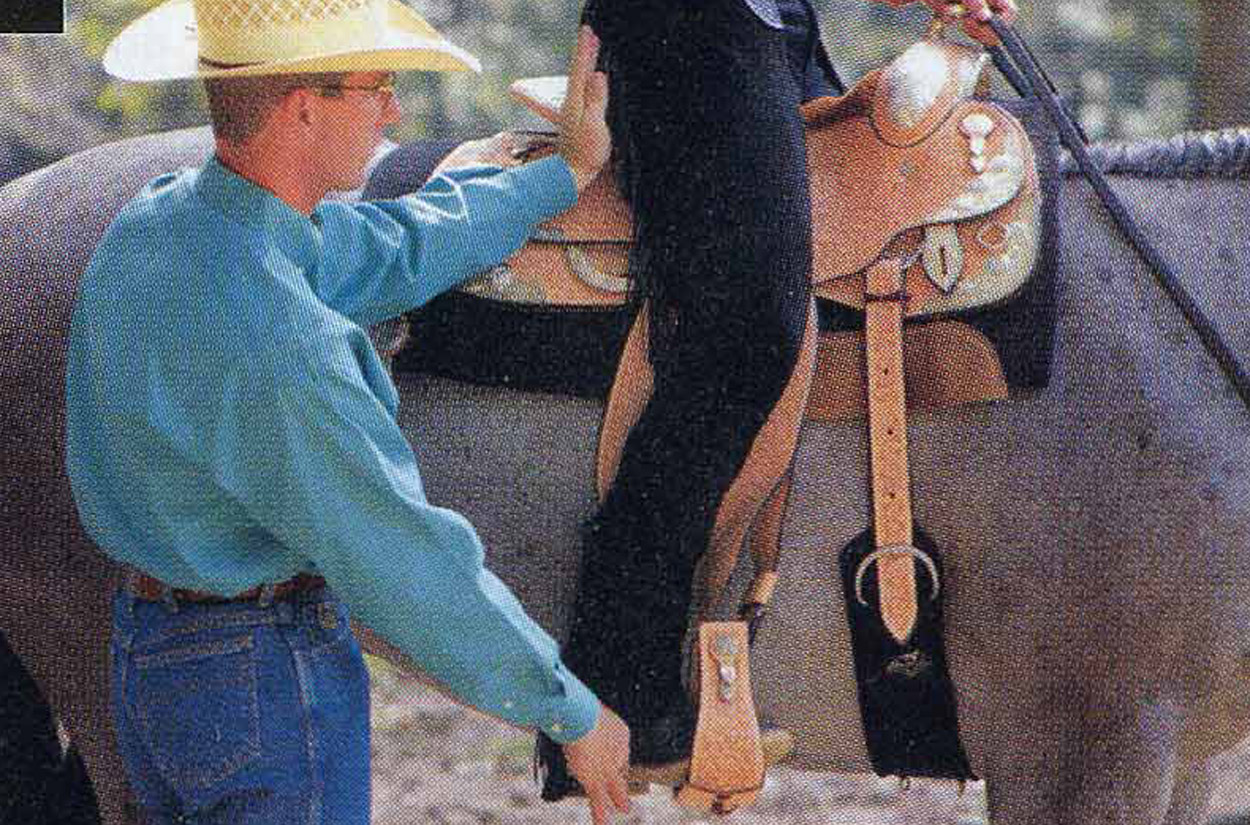
Winning Ways
Stirrup – Length Savvy
What’s the correct stirrup length for you in a Western saddle? It’s the one that allows you to securely lengthen and wrap your legs around your horse’s sides—without sacrificing your ability to drop weight into your heels, or to keep those heels aligned with your hips.

1. In American Quarter Horse Association horsemanship competition, the emphasis is on a strong lower leg, that is, the area from knee to heel. With that in mind, l’ll demonstrate the guidelines I give my horseman-ship students, which can provide the standard for most Western events.

2. Ideal. This rider exhibits a soft bend in her knee, meaning the joint isn’t bent so far that it’s pushed upward, making her look as though she‘s perched, nor so minimally that she appears to be reaching for her stirrup. She has a lot of “drop” in her heel, indicating that her weight is securely balanced there; her calf is stretched downward such that she’s maximized the amount of contact against her horse’s side. She’s also able to easily hold her heel in alignment with her hip (and shoulder and ear). With such a lower leg configuration, this rider not only has a secure base over which she can balance, but she can also use the entire length of her lower leg for effective cueing.Those two elements add up to one thing: maximum control. Bonus: When you ride with a long stirrup, actual length of leg is less of an issue. Even if your limbs are short, the fact that you’re stretching down the lower portion visually lengthens the leg, enhancing your profile in the saddle.

3. Too short. When your stirrups are too short, you not only end up perching in your saddle, but your heels tend to pull forward of your hips, as I‘m showing here. (Look at the gap between my right hand, which indicates where her heel should be, and where the heel actually is.) The combination makes it nearly impossible to drop significant weight in your heel, shortening the amount of leg you can lay against your horse‘s side.Your ability to cue effectively is ruined. Even worse, you erode your base of security, setting up risk of a fall, should your horse make an unexpected move.

4. Too long. When your stirrups are too long, you tend to push your leg back as you attempt to reach for and “grip” the stirrup with your toes. Your heels pop up, pitching your upper body—and your weight—forward as you attempt to balance over this precarious and unstable base of support. Not only are you insecure and ineffective as a rider, but you’ll likely cause your horse to scurry forward beneath you as he attempts to balance under your upper body. Not a pretty picture. And it’s not a fun way to ride.
Horse & Rider
Written by Robin Frid




